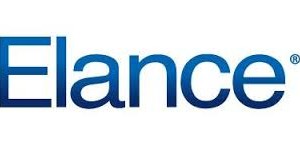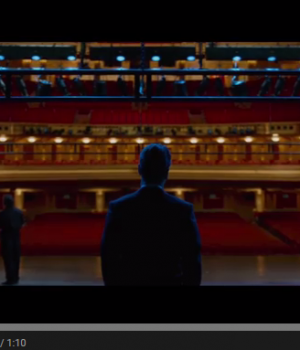Ask me about freelancing. I’m a freelancer, and you’re reading these words because of Elance, the company this article is about.
Yup, Anthill found me on Elance, so I’m living proof that it works, and works well.
But, you don’t have to take my word for it. 30% of the Aussie workforce – 3.7 million Australians – are now freelancing.
“Freelancing in all its forms – from full-time, independent freelancers to those people doing it part-time or on the side – isn’t something that has been valued before. This study highlights the growth and importance of freelancing in Australia, contributing $51 billion to the economy each year. The data also shows us that freelancing is seen as an attractive career choice. Technology is a key driver here, with over half (59 per cent) of freelancers stating that technology is making freelancing easier. The connected era is removing barriers and liberating our workforce. A more diverse and flexible workforce will be the new norm,” said Kyri Theos, Australian Country Manager of Elance-oDesk.
A third of moonlighters – professionals with a primary job who also freelance on the side – have thought about quitting to work completely independently, and almost three quarters of non-freelancers would be willing to do additional work outside of their primary job if it was available and enabled them to make more money, the study also shows. In terms of age groups, Gen Ys and Baby Boomers are leading the freelancing trend. Over a third of Gen Ys and over 55s are freelancing (compared to 25 per cent for other age groups).
The study identified five segments of freelancers, covering the diverse range of people who are freelancing today:
Independent Contractors (35 per cent of the independent workforce / almost 1.3 million professionals) These “traditional” freelancers don’t have an employer and instead do freelance, temporary or supplemental work on a project-to-project basis.
Moonlighters (19 per cent / almost 704,000)
Professionals with a primary, traditional job who also moonlight doing freelance work. For example, a corporate-employed web developer who also does projects for non-profits in the evening.
Diversified Workers (23 per cent / almost 852,000)
People with multiple sources of income from a mix of traditional employers and freelance work. For example, someone who works the front desk at a dentist’s office 20 hours a week and fills out the rest of his income driving for Uber and doing freelance writing.
Temporary Workers (20 per cent / almost 741,000)
Individuals with a single employer, client, job or contract project where their status is temporary. For example, a business strategy consultant working for one startup client on a contract basis for a months-long project.
Freelance Business Owners (3 per cent / almost 111,000)
Business owners with between one and five employees who consider themselves both a freelancer and a business owner. For example, a social marketing guru who hires a team of other social marketers to build a small agency, but still identifies as a freelancer.
Cumulatively, 3.7 million businesses and 9.3 million freelancers have tapped into www.Elance.com and www.oDesk.com to access talent via the Internet. As an increasingly connected and independent workforce goes online, talent—like software, shopping and communications before it—is shifting to the cloud. It’s easier for businesses to find the skills they need, and freelancers have more choice in their working lives.
Sounds like a win/win to me. In fact, I know it is, this is my life.






![The Ultimate Social Media Almanac with James Tuckerman [Cheat Sheet]](https://anthillonline.com/wp-content/uploads/2015/11/Screen-Shot-2015-11-26-at-11.24.55-300x194.png)
![Five essential things to get right if you want to raise capital, with Bryan Vadas [FREE CHEAT SHEET]](https://anthillonline.com/wp-content/uploads/2015/08/vadas-3d-cover-01--100x75.png)
![Four Page Digital Marketing Strategy [FREE RESOURCE]](https://anthillonline.com/wp-content/uploads/2015/01/FOUR-PAGE-IMAGE-100x75.png)
![How to secure lucrative sponsorships in five steps [CHEAT SHEET]](https://anthillonline.com/wp-content/uploads/2016/02/jackie-fast-meme-04-100x75.jpg)
![Learn how to generate more leads in one month than most competitors would in one year! [FREE REPORT]](https://anthillonline.com/wp-content/uploads/2015/08/Capture4-100x75.jpg)
![Instagram for Business… in 12 steps [FREE INFOGRAPHIC]](https://anthillonline.com/wp-content/uploads/2015/08/Capture7-100x75.jpg)


![Is this the second best video ever added to YouTube? Judge for yourself! [VIDEO]](https://anthillonline.com/wp-content/uploads/2013/04/CatinSharkSuit-300x350.jpg)
![How to have your own signature move: personal branding 101 [VIDEO]](https://anthillonline.com/wp-content/uploads/2014/08/Zaphod-300x350.jpg)
![Success! Apparently, it’s all in the lighting [VIDEO]](https://anthillonline.com/wp-content/uploads/2014/10/goldblum-300x350.jpg)

![How to pitch sales and marketing ideas to your boss with James Tuckerman [FREE REPORT]](https://anthillonline.com/wp-content/uploads/2015/07/Render-3-100x75.png)
![The Gaddie Pitch in three simple sentences with Antony Gaddie and James Tuckerman [CHEAT SHEET]](https://anthillonline.com/wp-content/uploads/2015/08/GADDIE-PITCH-updated-3D-cover--100x75.png)
![How did Sean Clark build a $300 million turnover company from a $500 AdWords investment? [CHEAT SHEET]](https://anthillonline.com/wp-content/uploads/2016/03/SEAN-CLARK-cheatsheet-NSFU-02.pdf-Box-2016-03-16-14-43-21-100x75.png)
![New Zealand’s Xero eyes US IPO, further disruption as subscribers increase [INFOGRAPHIC]](https://anthillonline.com/wp-content/uploads/2014/07/sruuuuujana-212x194.png)
![Ever wonder if your ‘content marketing’ is really just crap? You gotta see this! [INFOGRAPHIC]](https://anthillonline.com/wp-content/uploads/2014/08/content-100x75.jpg)
![7 Business Lessons From Game of Thrones [INFOGRAPHIC]](https://anthillonline.com/wp-content/uploads/2014/10/infographic-games-of-thrones-041-100x75.jpg)
![How to build your own Media Empire… In seven steps with Nathan Chan [INFOGRAPHIC]](https://anthillonline.com/wp-content/uploads/2014/10/Nathan-Chan-Infographic-e1413419529176-100x75.jpg)
![5 Business Lessons From Tinder [INFOGRAPHIC]](https://anthillonline.com/wp-content/uploads/2014/10/Tinder-Elegant-Infographic-100x75.jpg)



